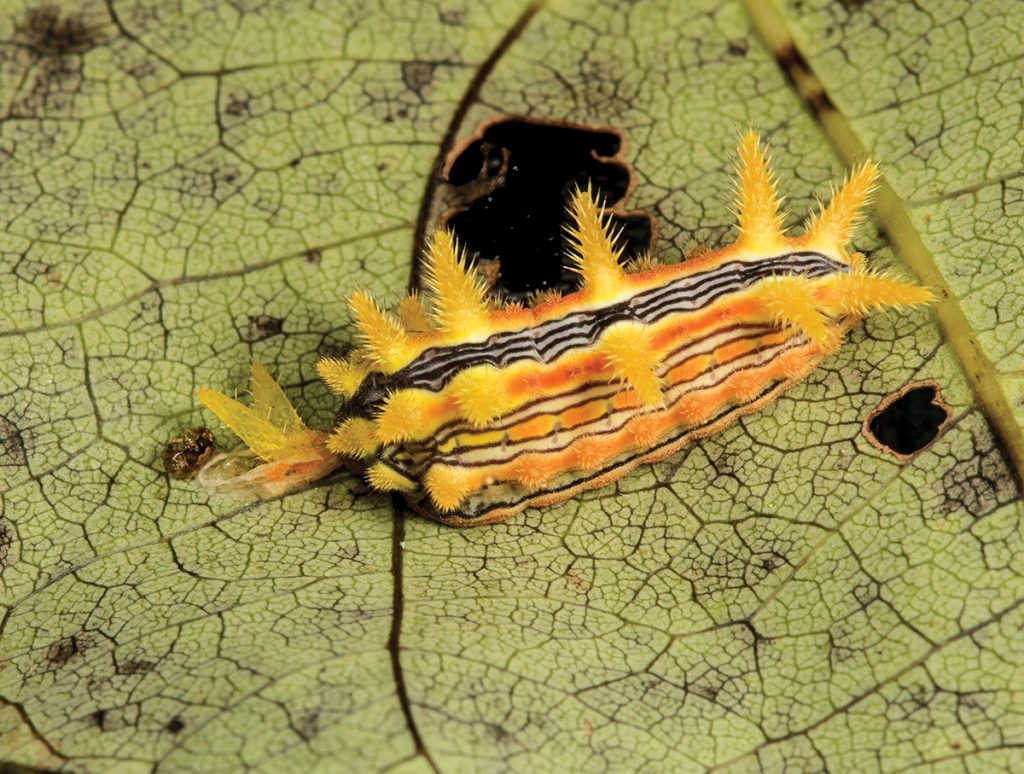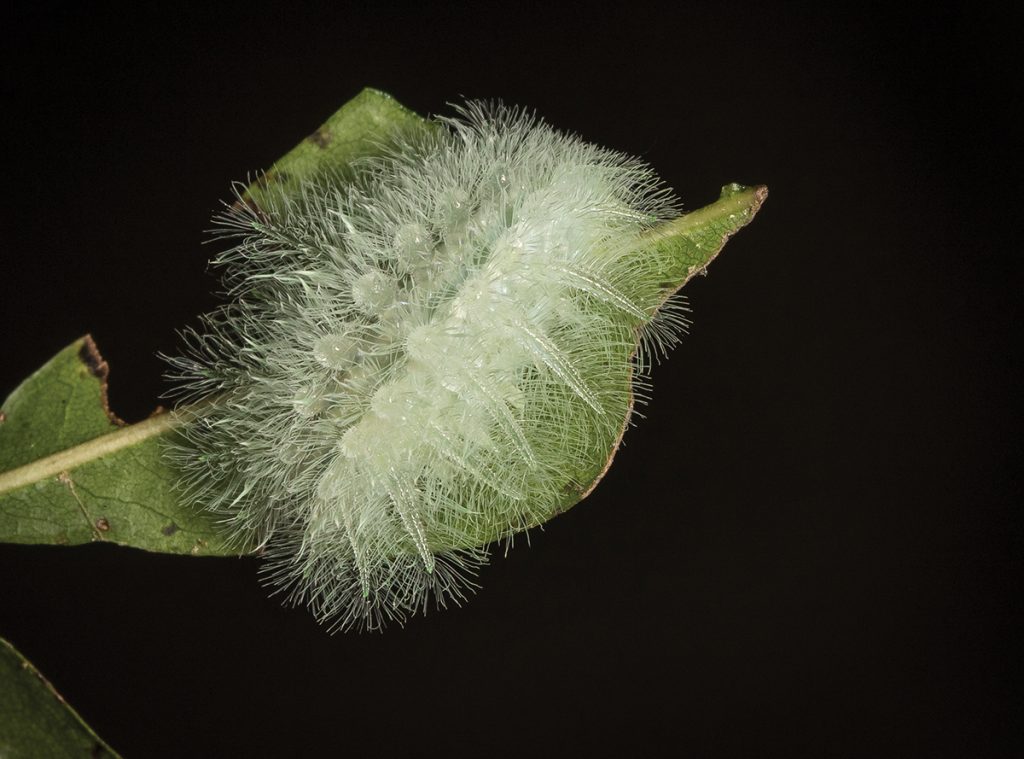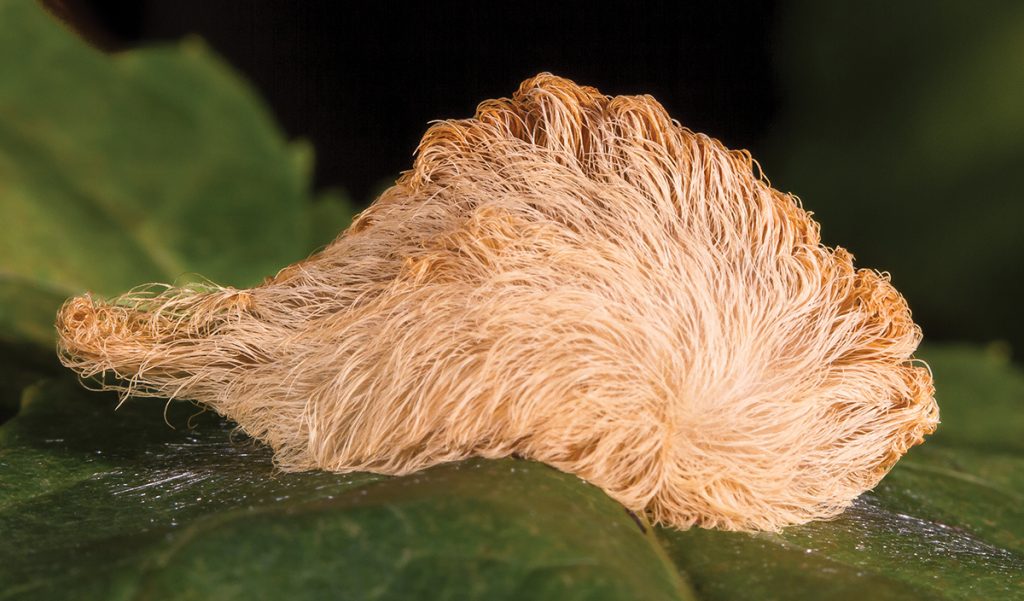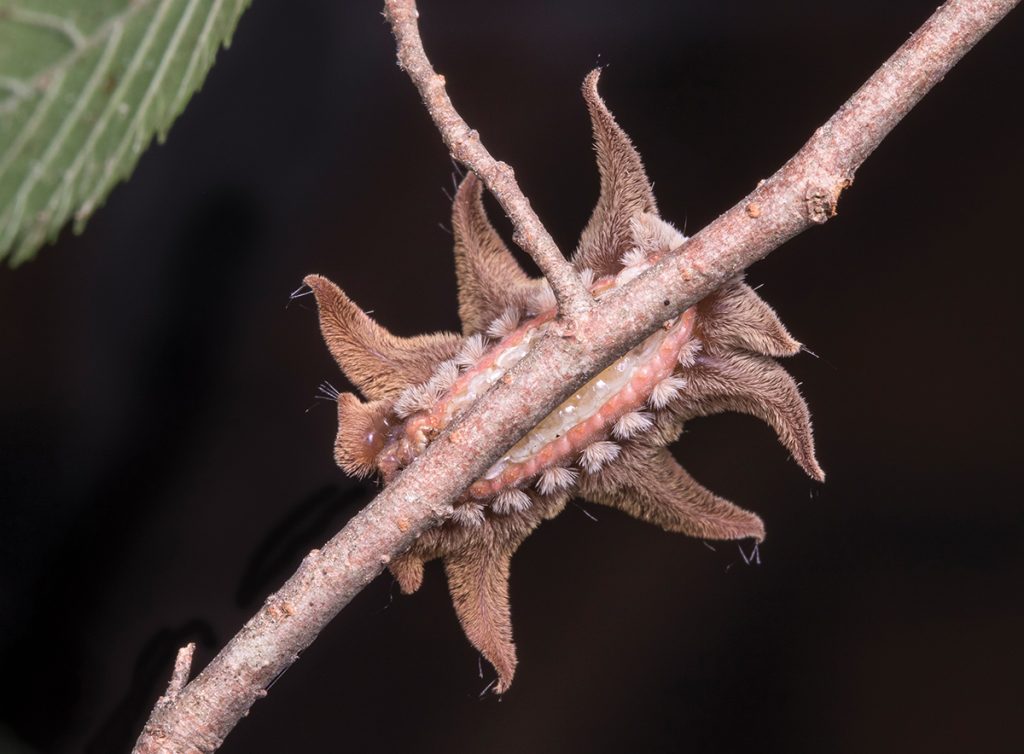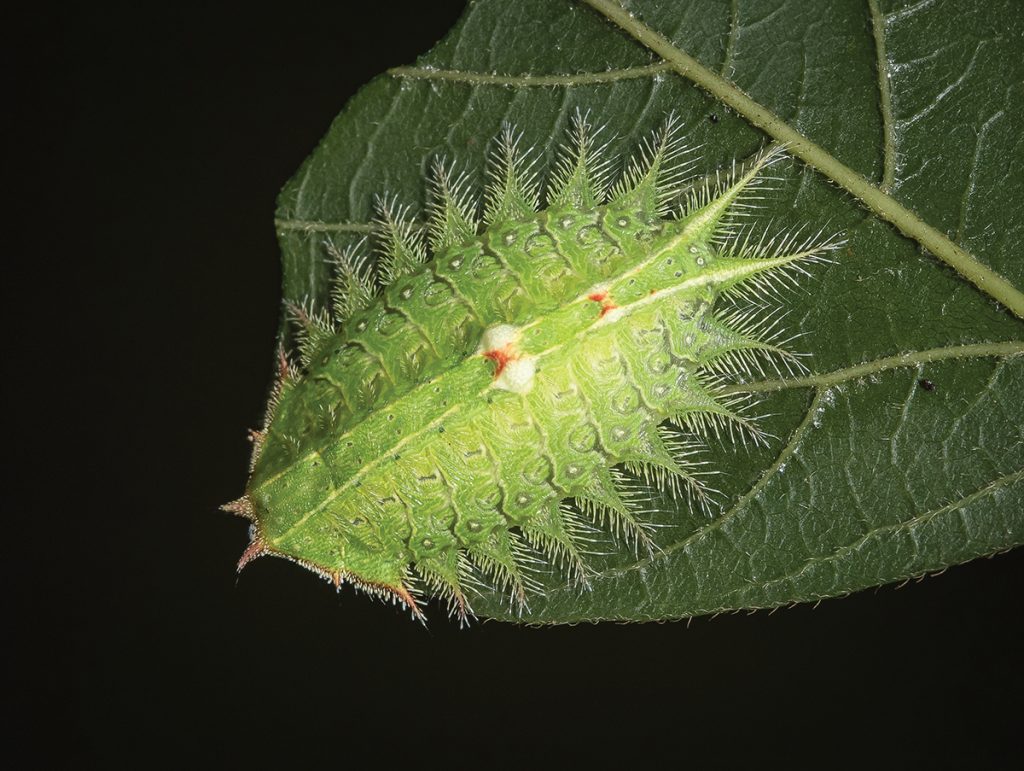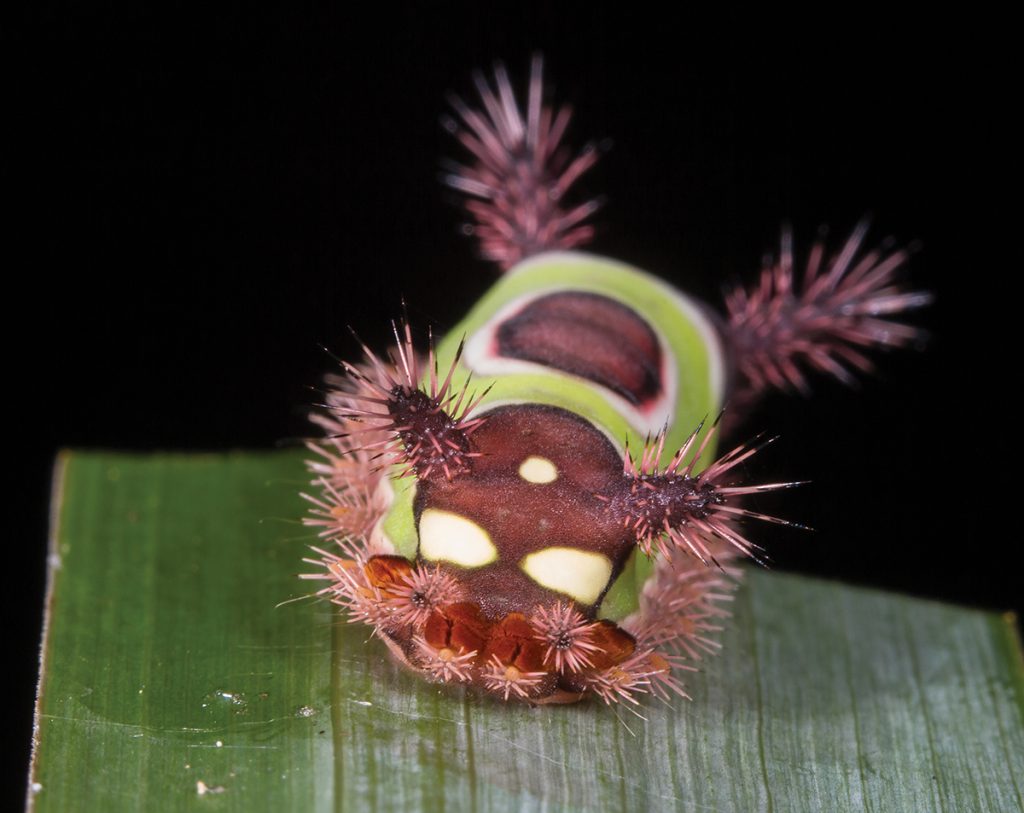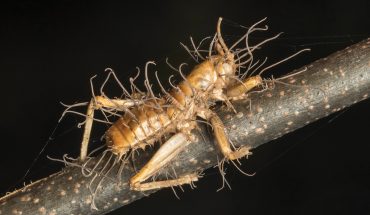Get to know this small group of venomous insects that can irritate humans. They’re pretty cool-looking, too!
by Mike Dunn
Every so often while weeding in our yard, I’ll reach in to grab a plant and suddenly feel a burning sensation on my arm. It’s like a mild wasp sting, the pain lasting a few minutes and usually accompanied by a slight red welt.
But instead of getting upset, I’ll excitedly start looking for the cause. And when I turn over the leaf, I know the culprit: a Saddleback Caterpillar.
Unmistakable once you see one, the Saddleback Caterpillar is named for the resemblance of the large brown spot on its back to, you guessed it, a saddle. It’s one of the most common of the “urticators,” or stinging caterpillars, in our region.
Either end of this 1-inch long larva has prominent horns armed with numerous stinging spines. There are also clumps of spines all along the lower edge of its body.
Before you start to panic, don’t worry: Stinging caterpillars are not that common. Of the almost 12,000 species of caterpillars identified in the United States, only about 50 are known to cause harm to humans.
Locally, we have only a dozen or so that you should avoid. And our local stinging larvae usually cause no more than a slight startle and mild burning sensation.
Stinging caterpillars do not sting in the same way as bees and wasps. Female bees and wasps have stingers at the tip of their abdomen; their stingers are actually highly modified ovipositors (egg-laying structures) with associated venom glands.
A wasp inserts its stinger and pumps venom into your skin leading to the burning sensation (and possibly other medical issues for certain people) that most associate with a sting.
By contrast, stinging caterpillars like the Saddleback have urticating hairs, which are hollow hairs or spines that contain venom. These can easily break off if touched by a passing animal and inject the venom, causing varying degrees of pain depending on the number of hairs touched and the species in question. (There are lots of caterpillars that have hairy but non-venomous bodies.
A few of those, like White-marked Tussock Moth larvae, can cause skin irritation on sensitive individuals.)
Caterpillars with urticating hairs come in a variety of beautiful and unusual shapes. Here are a few of the ones that live in our area that I think are the most interesting.
Reaching 2.5 inches in length, the larva of the beautiful Io Moth is the largest of our local stingers.
They feed on a variety of plants and are easily recognized in their late stages by the lime green color, red and white stripes along the middle, and clusters of sharp spines on each segment. Young larvae are brownish and feed in groups.
One of the more unusual-looking larvae (and said to be the most painful) is the Puss Moth caterpillar. It goes by many other names including Asp, and, in Mexico, el perrito (little dog). Due to its furry appearance, I tend to think of it as a crawling eyebrow, but a new favorite I recently saw is “toxic toupee.” Do not touch this one!
The long hairs cover an array of spines that can inflict a very painful sting. A friend of mine once brushed against one and had to go to the ER because the pain had become very intense and spread upward into her neck.
She ended up being fine, but this is one I treat very carefully. Luckily, most people will never see one, as they spend their life cycle in trees. Each year we have to look hard to find them for our caterpillar display at the annual BugFest event at the North Carolina Museum of Natural Sciences (this year on Sept. 16).
They feed primarily on tree leaves and form their cocoons on the twigs, so you may only see one if it accidentally drops out of its host tree.
The Crowned Slug is both strange and beautiful and is one of my favorites to find. The so-called “slug caterpillars” are a family that includes many stinging larvae (like the Saddleback mentioned above).
They all lack noticeable legs and instead have sucker-like structures on their undersides; they seem to glide rather than crawl. This species can be found late into the fall feeding on the undersides of tree leaves (primarily oaks).
The small Stinging Rose Caterpillar is a noticeably spiky member of the slug caterpillar group. They are brilliantly colored in red, yellow or orange stripes and feed on the leaves of a variety of woody plants.
Perhaps the strangest, least caterpillar-looking of our local stinging caterpillars is known by a couple of appropriately odd names, including Monkey Slug and Hag Moth Caterpillar.
With multiple curved hairy arms, it looks like a hairy spider or the disheveled hair of a fairy tale witch. There are clusters of spines along their lower edge, but some researchers claim they do not sting (I haven’t tested this theory). We usually find them on the leaves of trees.
There is one slug caterpillar, the Spun Glass Slug, that has been on my wish-to-find list for many years (don’t you have a caterpillar wish list?).
A few years ago, while using a UV flashlight to search for live specimens to display at BugFest, I saw a glowing spot on a leaf over our heads. We used a stick to pull the tree limb closer and there it was!
These dazzling caterpillars truly look like a piece of glass art. They are apparently rare (I’ve never found one again), but now I can’t help but look at the undersides of every oak and beech tree I come across in late summer.
Here’s hoping I haven’t frightened you. The vast majority of caterpillars are harmless and play an incredibly important role in our environment. The odds are you will never see any stinging caterpillars. But now you know: if it’s hairy, be wary; if it’s spiky, no likey.
This article originally appeared in the September 2023 issue of WALTER magazine.

